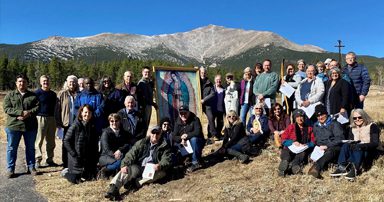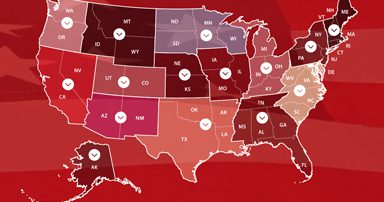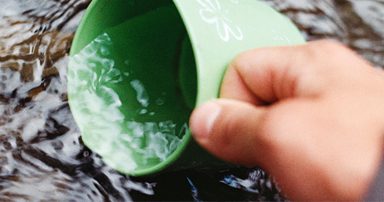GET INSIDE, STAY INSIDE, STAY TUNED
Nuclear explosions can cause significant damage and casualties from blast, heat, and radiation but you can keep your family safe by knowing what to do and being prepared if it occurs.
Fallout is most dangerous in the first few hours after the detonation when it is giving off the highest levels of radiation. It takes time for fallout to arrive back to ground level, often more than 15 minutes for areas outside of the immediate blast damage zones. This is enough time for you to be able to prevent significant radiation exposure by following these simple steps.
PREPARE NOW
-
Identify shelter locations. Identify the best shelter location near where you spend a lot of time, such as home, work, and school. The best locations are underground and in the middle of larger buildings.
-
While commuting, identify appropriate shelters to seek in the event of a detonation.
-
Outdoor areas, vehicles and mobile homes do NOT provide adequate shelter. Look for basements or the center of large multi-story buildings.
-
Make sure you have an Emergency Supply Kit for places you frequent and might have to stay for 24 hours. It should include bottled water, packaged foods, emergency medicines, a hand-crank or battery-powered radio to get information in case power is out, a flashlight, and extra batteries for essential items. If possible, store supplies for three or more days.
SURVIVE DURING
-
If warned of an imminent attack, immediately get inside the nearest building and move away from windows. This will help provide protection from the blast, heat, and radiation of the detonation. If you are outdoors when a detonation occurs take cover from the blast behind anything that might offer protection. Lie face down to protect exposed skin from the heat and flying debris. If you are in a vehicle, stop safely, and duck down within the vehicle.
-
After the shock wave passes, get inside the nearest, best shelter location for protection from potential fallout. You will have 10 minutes or more to find an adequate shelter.
-
Be inside before the fallout arrives. The highest outdoor radiation levels from fallout occur immediately after the fallout arrives and then decrease with time.
-
Stay tuned for updated instructions from emergency response officials. If advised to evacuate, listen for information about routes, shelters, and procedures.
-
If you have evacuated, do not return until you are told it is safe to do so by local officials.
BE SAFE AFTER
-
Immediately after you are inside shelter, if you may have been outside after the fallout arrived.
-
Remove your outer layer of contaminated clothing to remove fallout and radiation from your body.
-
Take a shower or wash with soap and water to remove fallout from any skin or hair that was not covered. If you cannot wash or shower, use a wipe or clean wet cloth to wipe any skin or hair that was not covered.
-
Clean any pets that were outside after the fallout arrived. Gently brush your pet’s coat to remove any fallout particles and wash your pet with soap and water, if available.
-
It is safe to eat or drink packaged food items or items that were inside a building. Do not consume food or liquids that were outdoors uncovered and may be contaminated by fallout.
-
If you are sick or injured, listen for instructions on how and where to get medical attention when authorities tell you it is safe to exit.
ADDITIONAL RESOURCES
FOR ALL EMERGENCIES: CORAC runs a HAM radio net and Signal groups. If communication goes out for any length of time, meet outside your local Church at 9 a.m. on Saturday mornings if it is safe to do so. Tell friends at Church now in case you can’t then. CORAC teams will be out looking for people to gather in and work with.






















0 Comments